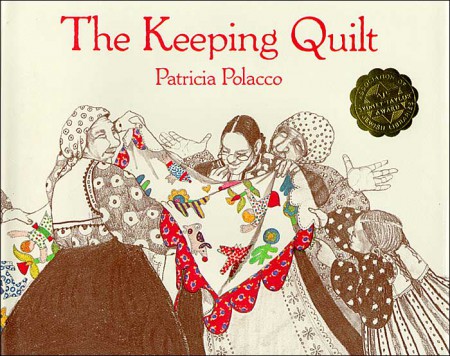The Keeping Quilt

Patricia Polacco / Grades 5-6 /
When Patricia's Great-Gramma Anna came to America as a child,
the only things she brought along from Russia were her dress and
the babushka she liked to throw up into the air when she was dancing.
Soon enough, though, Anna outgrew the dress and her mother decided
to incorporate it and the babushka into a quilt. "It will be like having a
family in backhome Russia dance around us at night," she said. And so it
was. Together with her Uncle Vladimir's shirt, Aunt Havalah's nightdress,
and an apron of Aunt Natasha's, Anna's mother made a quilt that would be
passed down through their family for almost a century. From one generation
to the next, the quilt was used as a Sabbath tablecloth, a wedding canopy,
and a blanket to welcome each new child into the world.
Standards
|
Social Studies
|
Standard 2: World History
2.1 The study of world history requires an understanding of world cultures and civilizations, including an analysis of important ideas, social and cultural values, beliefs, and traditions. This study also
examines the human condition and the connections and interactions of people across time and space and the ways different people view the same event or issue from a variety of perspectives.
2.2 Establishing timeframes, exploring different periodizations, examining themes across time and within cultures, and focusing on important turning points in world history help organize the study of world cultures and civilizations.
2.3 Study of the major social, political, cultural, and religious developments in world history involves learning about the important roles and contributions of individuals and groups.
|
ELA
|
Standard 1: Language for Information and Understanding
1.1 Listening and Reading: Listening and reading to acquire information and understanding involves collecting data, facts, and ideas; discovering relationships, concepts, and generalizations; and using knowledge from oral, written, and electronic sources.
Standard 2: Language for Literary Response and Expression
2.1 Language for Literary Response and Expression: Listening and reading for literary response involves comprehending, interpreting, and critiquing imaginative texts in every medium, drawing on personal experiences and knowledge to understand the text, and recognizing the social, historical and cultural features of the text.
|
| |
|


